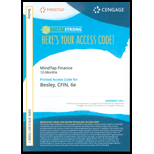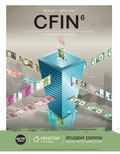
Concept explainers
The company FF will pay $1.50 at the end of this year, $2 at the end of year 2, post which it will increase its dividend by 5% indefinitely. Required
Non-Constant Dividend Growth Model
Non-constant growth model assumes that the company pay dividends based on its growth stage. According to the model, different amounts of dividends are paid in the initial years and then at some point of time they enter a phase with constant dividend growth model. Therefore, for the period in which the dividends paid are varying,
Stock price for non-constant growth model can be computed as follows:
Step 1
Find dividends for the non-constant growth period and discount them to the present value
Step 2
Compute the dividend at the start of the constant growth period and then using constant growth model, calculate the horizontal value of the stock at the end of the non-constant growth period.
Step 3
Find the present value of this horizontal stock price
Step 4
Add the present value of all the dividends and the present value of the horizontal price, to determine the current stock value
Want to see the full answer?
Check out a sample textbook solution
Chapter 7 Solutions
CFIN -STUDENT EDITION-ACCESS >CUSTOM<
- Beta Company Ltd issued 10% perpetual debt of Rs. 1,00,000. The company's tax rate is 50%. Determine the cost of capital (before tax as well as after tax) assuming the debt is issued at 10 percent premium. helparrow_forwardFinance subject qn solve.arrow_forwardPlease help with questionsarrow_forward
 EBK CONTEMPORARY FINANCIAL MANAGEMENTFinanceISBN:9781337514835Author:MOYERPublisher:CENGAGE LEARNING - CONSIGNMENT
EBK CONTEMPORARY FINANCIAL MANAGEMENTFinanceISBN:9781337514835Author:MOYERPublisher:CENGAGE LEARNING - CONSIGNMENT
 Intermediate Financial Management (MindTap Course...FinanceISBN:9781337395083Author:Eugene F. Brigham, Phillip R. DavesPublisher:Cengage Learning
Intermediate Financial Management (MindTap Course...FinanceISBN:9781337395083Author:Eugene F. Brigham, Phillip R. DavesPublisher:Cengage Learning


